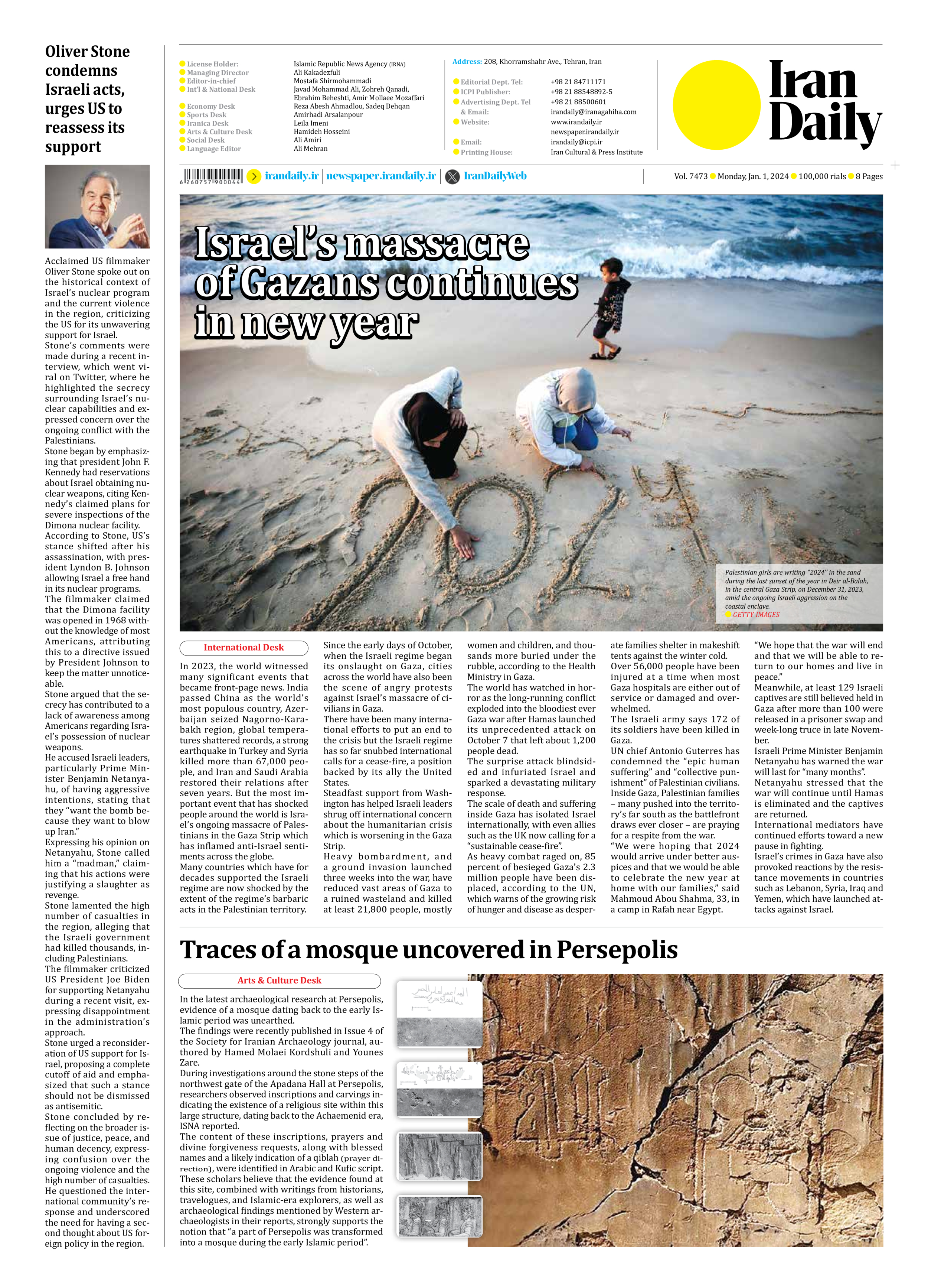
Traces of a mosque uncovered in Persepolis
Arts & Culture Desk
In the latest archaeological research at Persepolis, evidence of a mosque dating back to the early Islamic period was unearthed.
The findings were recently published in Issue 4 of the Society for Iranian Archaeology journal, authored by Hamed Molaei Kordshuli and Younes Zare.
During investigations around the stone steps of the northwest gate of the Apadana Hall at Persepolis, researchers observed inscriptions and carvings indicating the existence of a religious site within this large structure, dating back to the Achaemenid era, ISNA reported.
The content of these inscriptions, prayers and divine forgiveness requests, along with blessed names and a likely indication of a qiblah (prayer direction), were identified in Arabic and Kufic script.
These scholars believe that the evidence found at this site, combined with writings from historians, travelogues, and Islamic-era explorers, as well as archaeological findings mentioned by Western archaeologists in their reports, strongly supports the notion that “a part of Persepolis was transformed into a mosque during the early Islamic period”.







